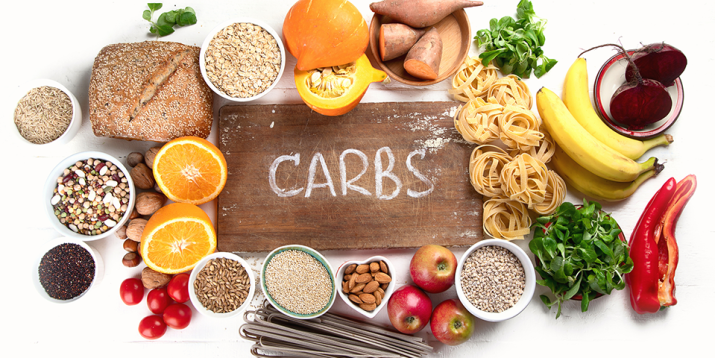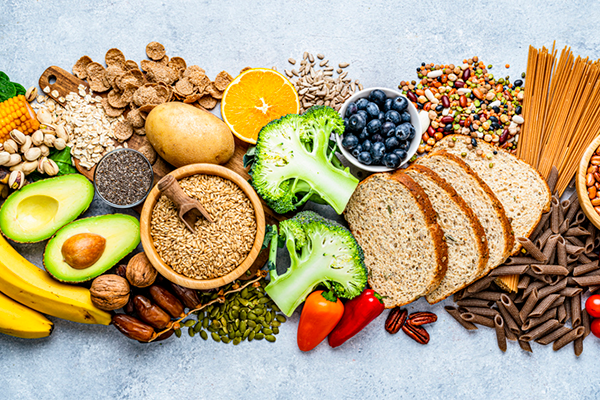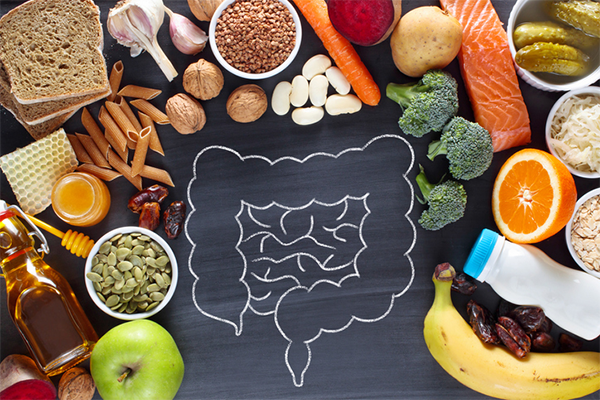What Are Net Carbs, and Should You Count Them?

If you care more about your net carbs than your net worth, you might want to take a step back and reevaluate. This concept started as a gimmick for food manufacturers to market their products as “low-carb,” and now it’s something many ketogenic diet proponents advise you calculate.
But most nutrition experts say you don’t need to worry about how many net carbs you eat in a day. So what’s the deal? Here’s everything you need to know about net carbs.
What Are Net Carbs?
Net carbs are what’s left when you deduct from the total amount of carbohydrate in a food the types of carbohydrates that aren’t digested by the body.
Net Carbs vs. Total Carbs

The difference between net carbs and total carbs comes down to the three basic types of carbohydrates — starches, sugar, and fiber — and how each is processed by the body.
Total carbs
This is the gross amount of carbohydrates in a serving of food, including all three basic types mentioned above. Whether it’s digestible or indigestible, simple or complex, refined or unrefined, it counts toward the total.
Net carbs
Some types of carbohydrates aren’t digested, meaning they pass through your system without being converted into usable energy. Net carbs are what remain after you subtract any carbs your body can’t digest.
For instance, “your body handles the digestion of fiber differently than the way it handles sugar,” explains Krista Maguire, R.D.
“A portion of the fiber simply passes through your digestive system intact, so it’s less likely to cause a spike in blood sugar.” That’s why you don’t count fiber when you calculate net carbs.
Do Net Carbs Matter?
First things first: Carbs aren’t inherently “bad.”
“Carbs often get a bad rap, but there are carbs that provide valuable nutrients, and then there are carbs that are pretty much just empty calories,” Maguire, says.
That said, it is important to watch your intake. While they’re an important fuel source, carbohydrates are quickly broken down into sugar, and any excess can be stored as fat.
The term “net carb” is a marketing buzzword, meaning it’s not formally recognized by the Food and Drug Administration (FDA) or any other health organization. But they can help you pinpoint foods that are friendlier for maintaining normal blood sugar levels, since a “net carb” is any carbohydrate that can be converted to sugar.
How Do You Calculate Net Carbs?
No need for a fancy net carb calculator, just take the total number of carbs and subtract the grams of indigestible carbs. What remains is the net carbs.
Which Types of Carbs Get Subtracted From the Total?

There are three types of carbohydrates that can be deducted from your total carb intake to lower your “net carb” count.
Fiber
Dietary fiber passes through your digestive system without getting broken down or absorbed. It also feeds the good bacteria in your gut and helps move food through your system more efficiently.
There are two types of fiber: soluble and insoluble.
Soluble fiber absorbs water, which can help you feel fuller. Examples include nuts, beans, seeds, oats, and some fruits and vegetables.
Insoluble fiber, which doesn’t absorb water, may help expedite food through the digestive tract. Examples include fruit and vegetable skins, brown rice, and grains.
Because fiber isn’t digested, under the “net carbs” approach it can be subtracted from the total carb count in a food. Occasionally, you can even find a food with zero net carbs. This means the fiber content “cancels out” all the other carbs.
Resistant starch
Resistant starch has been found to increase fat oxidation, so it’s been getting a lot of attention as a possible weight-loss miracle-carb. And like fiber, your body can’t break it down (it, ahem, resists digestion), so it doesn’t count toward your total carbohydrates.
One popular source of resistant starch is green banana flour. While it has 24 grams of carbs per 30 g serving, it is often claimed that 60 to 80 percent of its carbohydrates come from indigestible carbs including resistant starch, so they aren’t believed to greatly impact blood sugar.
Sugar alcohols
Sugar alcohols (like maltitol and erythritol) are manufactured from natural sources like cornstarch, sugar cane, and whey. (And no, they won’t get you tipsy.) You probably consume more of these than you realize; they include common “sugar-free” sweeteners like sorbitol and xylitol.
Unlike fiber and resistant starch, your body does digest sugar alcohols — but they don’t affect your blood glucose levels as much as actual sugar does.
While some manufacturers claim that sugar alcohols don’t impact your blood sugar at all, the Diabetes Teaching Center at the University of California San Francisco suggests splitting the difference and counting half of the sugar alcohol content.
Here’s where it can get sticky: Some manufacturers may still subtract all sugar alcohol content from their promoted carb counts. So check nutrition facts labels carefully. If a product says it’s sugar-free but has sugar alcohols, it can still affect your blood sugar. And because sugar alcohols can be more difficult for the body to digest, they could cause some digestive discomfort (gas, bloating, etc.).
Do Whole Grains Have Fewer Net Carbs?
Whole grains retain their outer husks, or brans, which are generally very high in fiber — so yes, whole-grain foods tend to have fewer net carbs than their starchy white counterparts. Of course, the extra fiber doesn’t completely cancel out the carbs, so you should still watch your portions.
But it’s important to note that net carbs aren’t the only thing to consider when choosing a food. There are plenty of other reasons to eat whole grains.
When grains are refined, they’re stripped of their fiber, vitamins, minerals, and other phytonutrients — but all that good stuff is still in the whole grains.
Whole grains also break down more slowly than refined carbs, so they’re less likely to spike your blood sugar.
Also, all that fiber tends to keep the trains running on time, if you know what we mean.
What Are “Empty Carbs”?
The term “empty carb” generally refers to carbohydrates that don’t offer much nutritional value. Sugary drinks, white bread, candy, and alcohol fall into this category.
Empty carbs count toward your net carbs, but not all net carbs are empty carbs. There are plenty of foods — fruits, veggies, grains — that can have an effect on your blood sugar, but also offer plenty of nutritional benefits.
What Foods Are Low in Net Carbs?

Net carb counts aren’t always reliable. While information on fiber content is readily available from the USDA, it can be difficult to calculate resistant starch content, which can change with a food’s ripeness or even how it’s prepared and cooled.
Different sources cite different amounts — although oats, legumes, and potatoes all contain substantial amounts of resistant starch — but here are a few high-fiber foods you might consider adding to your diet:
- Lentils. Lentils are a great source of plant-based protein. They contain almost 18 grams of protein per cup, and 16 grams of fiber.
- Total carbs per cup: 40 grams. Net carbs: 24 grams.
- Artichokes. One cooked artichoke contains 7 grams of fiber.
- Total carbs per artichoke: 14 grams. Net carbs: 7 grams.
- Raspberries. Raspberries are an excellent source of vitamin C, but they also have enough fiber to cut their net-carb count in half.
- Total carbs per cup: 15 grams. Net carbs: 7 grams.
Should I Count Net Carbs?
Maguire says there’s no need to worry about counting net carbs, even if you live with diabetes or are trying the keto diet. The American Diabetes Association advises that diabetics look at the total carbohydrates in foods and monitor their blood glucose and insulin to see how different foods affect it.
Those on the ketogenic diet can only know if they are in ketosis by testing for ketone bodies. “No one officially knows the impact fiber has on ketosis,” Maguire says.
If you are concerned about your carbohydrate intake, talk to a registered dietitian. Otherwise, forget about net carbs.
“Balancing blood sugar doesn’t come from a math equation,” Maguire says. “It’s simple to do by consuming a balanced diet filled with naturally healthful foods that also provide a myriad of benefits in addition to blood sugar balance.”
